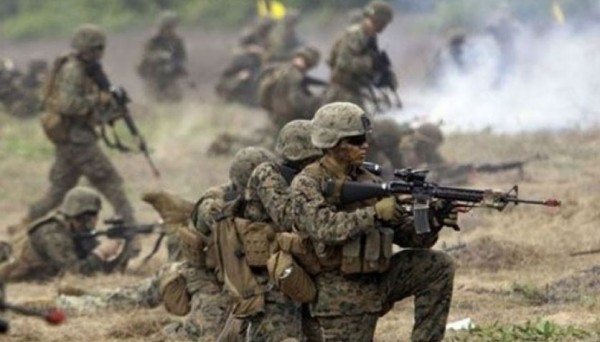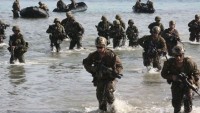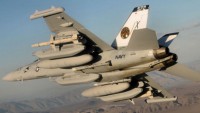More US Marines to be Deployed to South China Sea
| Arthur Dominic Villasanta | | Jul 11, 2016 06:14 AM EDT |
(Photo : US Navy) US Marines on an amphibious assault exercise
The U.S. Marines are expanding their combat presence in the South China Sea by deploying an Amphibious Ready Group and Marine Expeditionary Unit each to the northern and southern parts of the disputed sea.
This strategy intends to create a stronger presence near the southern end of the South China Sea, said Lt. Gen. John Wissler, commander of Marine Corps Forces Command. It will counter China's increased naval presence in the South China Sea and targets China's claims over disputed features in the Spratly Islands close to the Philippines, a U.S. ally.
Like Us on Facebook
The strategy will see the Marine Corps deploy a second Amphibious Ready Group and Marine Expeditionary Unit (MEU) to the South Pacific in 2019, and perhaps as early as 2018. This force will be based in Australia.
The additional combat units will give the U.S. Marines and the U.S. Navy far greater reach. U.S. Marines in Australia and Okinawa might join the new combat group.
The U.S. Navy will deploy another three-ship Marines' MEU to Australia as early as October 2018. Gen. Wissler said the goal is to augment the Marines currently deployed to the Marine Rotational Force - Darwin on six-month rotations.
Some 1,250 Marines are currently stationed in Darwin and U.S. and Australian officials hope to boost that number to 2,500 by 2020. Adding another MEU will mean another 4,000 sailors and Marines will be rotating through the South Pacific.
A second MEU based in the South Pacific will allow the Okinawa-based 31st Marine Expeditionary Unit to focus on the northern part of the South China Sea. The 31st MEU currently conducts 90-day patrols in the Asia Pacific region twice a year.
"So not only will you have a forward-deployed naval force with forward ships that are home-ported in Japan, but you will have additional amphibious capability on multiple 90-day patrols in and around the Asia-Pacific," said Wissler.
The U.S. has been increasing its naval presence in the South China Sea and is conducting freedom-of-navigation patrols near the islands China has created.
TagsU.S Marines, Lt. Gen. John Wissler, U.S. Navy, 31st Marine Expeditionary Unit
©2015 Chinatopix All rights reserved. Do not reproduce without permission
EDITOR'S PICKS
-

Did the Trump administration just announce plans for a trade war with ‘hostile’ China and Russia?
-

US Senate passes Taiwan travel bill slammed by China
-

As Yan Sihong’s family grieves, here are other Chinese students who went missing abroad. Some have never been found
-

Beijing blasts Western critics who ‘smear China’ with the term sharp power
-

China Envoy Seeks to Defuse Tensions With U.S. as a Trade War Brews
-

Singapore's Deputy PM Provides Bitcoin Vote of Confidence Amid China's Blanket Bans
-

China warns investors over risks in overseas virtual currency trading
-

Chinese government most trustworthy: survey
-

Kashima Antlers On Course For Back-To-Back Titles
MOST POPULAR
LATEST NEWS
Zhou Yongkang: China's Former Security Chief Sentenced to Life in Prison

China's former Chief of the Ministry of Public Security, Zhou Yongkang, has been given a life sentence after he was found guilty of abusing his office, bribery and deliberately ... Full Article
TRENDING STORY

China Pork Prices Expected to Stabilize As The Supplies Recover

Elephone P9000 Smartphone is now on Sale on Amazon India

There's a Big Chance Cliffhangers Won't Still Be Resolved When Grey's Anatomy Season 13 Returns

Supreme Court Ruled on Samsung vs Apple Dispute for Patent Infringement

Microsoft Surface Pro 5 Rumors and Release Date: What is the Latest?












